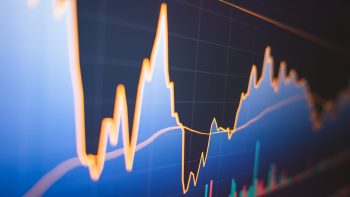
When it comes to measuring economic welfare, GDP doesn’t cut it
When it comes to measuring economic welfare, GDP doesn’t cut it

Hey, how are you?
Seriously. How are you feeling about your economic situation?
Because the unemployment rate is still near generational lows, inflation is down to 3.2%, and gross domestic product, or GDP, grew at a respectable 2.1% annual rate in the second quarter.
But those numbers do not tell you how people actually feel.
“The way in which we currently evaluate progress and success is largely centered around our level of economic growth,” said Amanda Janoo, economic and policy lead for the Wellbeing Economy Alliance. “That tells us about how much we’re producing, but doesn’t really tell us anything about the quality of our lives or about the sustainability of our futures.”
How we got our system of measuring economic growth
GDP itself, the standard tool for measuring economic growth, is a relatively new concept.
In the 1930s, during the Great Depression, an economist named Simon Kuznets working with the Commerce Department was tasked by Congress to come up with a method for measuring economic change.
At the time, millions of people were out of work, and the government wanted better statistical tools for gauging the level of economic decline and the impact of relief efforts.
Kuznets and his team published the first set of national income statistics in 1934. President Franklin D. Roosevelt was soon using them in speeches.
At the time, those national income statistics were revolutionary. It gave policymakers one number that could sum up a country’s economy.
After the Bretton Woods Conference in 1944, Kuznet’s method for measuring economic growth became standard around the world and led to his Nobel Prize.
“Unfortunately, it has come to be used also as a measure of economic welfare,” said Steve Landefeld, who served as director of the Bureau of Economic Analysis, the agency that publishes GDP, from 1995 to 2014. “GDP per capita is used for all kinds of purposes — international organizations, allocating funds, fiscal [and] monetary policy guidance, all that stuff.”
Why there’s a push for new measurement tools
When Kuznets first presented national income statistics in the 1930s, he explicitly warned Congress against using them to evaluate economic welfare.
“Economic welfare cannot be adequately measured unless the personal distribution of income is known,” he wrote in a congressional report in 1934. “And no income measurement undertakes to estimate the reverse side of income, that is, the intensity and unpleasantness of effort going into the earning of income.”
This GDP limitation has been known and talked about by economists and policymakers for decades.
In a campaign speech in 1968, presidential candidate Robert F. Kennedy said that gross national product, a close cousin of GDP, measures everything “except that which makes life worthwhile.”
“The problem is, [GDP] is only market transactions,” Landefeld said.
As Kuznets pointed out in the 1930s, that means that GDP does not account for the byproducts of production — such as pollution or the quality of working conditions — nor does it include unpaid household work or new skills learned by workers.
“So from all directions, the keepers of the GDP have had pressure to change GDP from this measure of the market economy to one that measures economic welfare,” Landefeld said.
That pressure has only increased in recent years.
“Coming out of the financial crisis, there was a lot of interest in new economic ideas and initiatives,” Janoo said. The organization she works for, the Wellbeing Economy Alliance, is a collaboration of more than 400 organizations pushing for a paradigm shift in economic measurement and design. “Compared to the other OECD [Organization for Economic Cooperation and Development] countries, the U.S. is pretty behind,” she said.
What those tools might look like
As one example, she pointed to Canada, which recently developed a “quality of life framework” based on 84 key well-being metrics. It includes indicators like job satisfaction and trust in others. Australia is doing something similar.
In the United States, the BEA has begun publishing a dashboard of “economic well-being and growth” statistics as part of what it calls the GDP and Beyond initiative.
“It’s part of a longer-term plan,” said Thomas Dail, a BEA spokesperson. He said the next phase will be publishing the distribution of personal income by state, as a way to assess how the nation’s economic growth is shared across households at different income levels.
The fiscal 2024 budget request for BEA includes a proposal to develop a set of statistics for tracking the nation’s natural assets, such as rivers, forests and air, Dail said.
Janoo said these are steps in the right direction.
“I fully believe we have the statistical capacities to do it,” she said. “I think the point is just to be clear on where we try to go and what are we trying to achieve as people.”
There’s a lot happening in the world. Through it all, Marketplace is here for you.
You rely on Marketplace to break down the world’s events and tell you how it affects you in a fact-based, approachable way. We rely on your financial support to keep making that possible.
Your donation today powers the independent journalism that you rely on. For just $5/month, you can help sustain Marketplace so we can keep reporting on the things that matter to you.

















